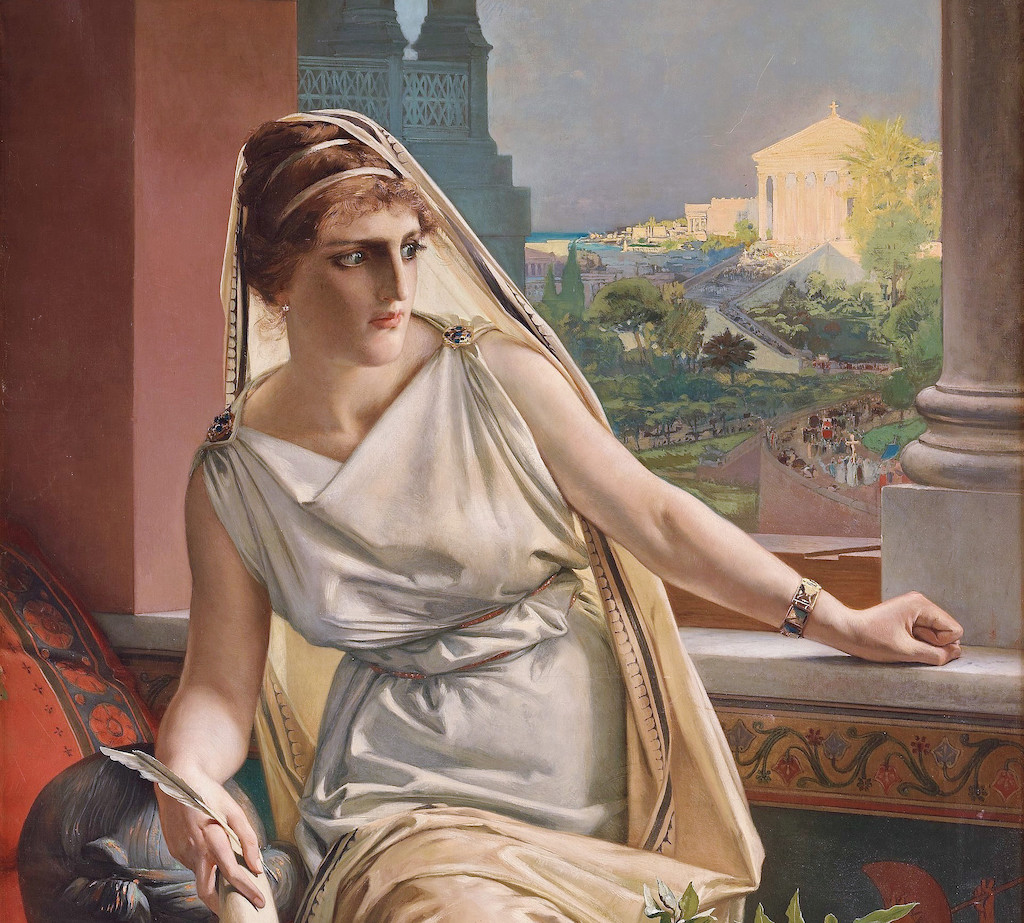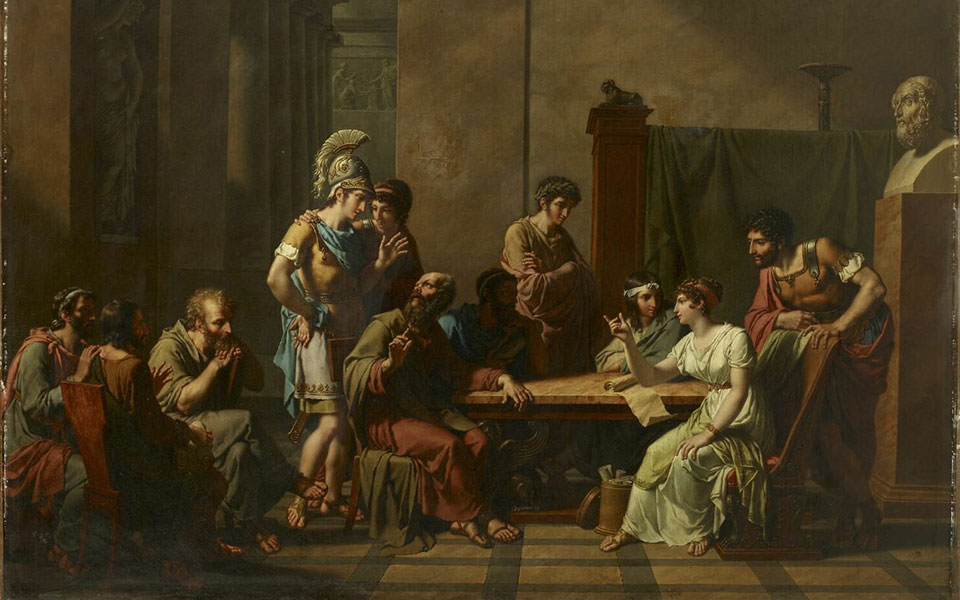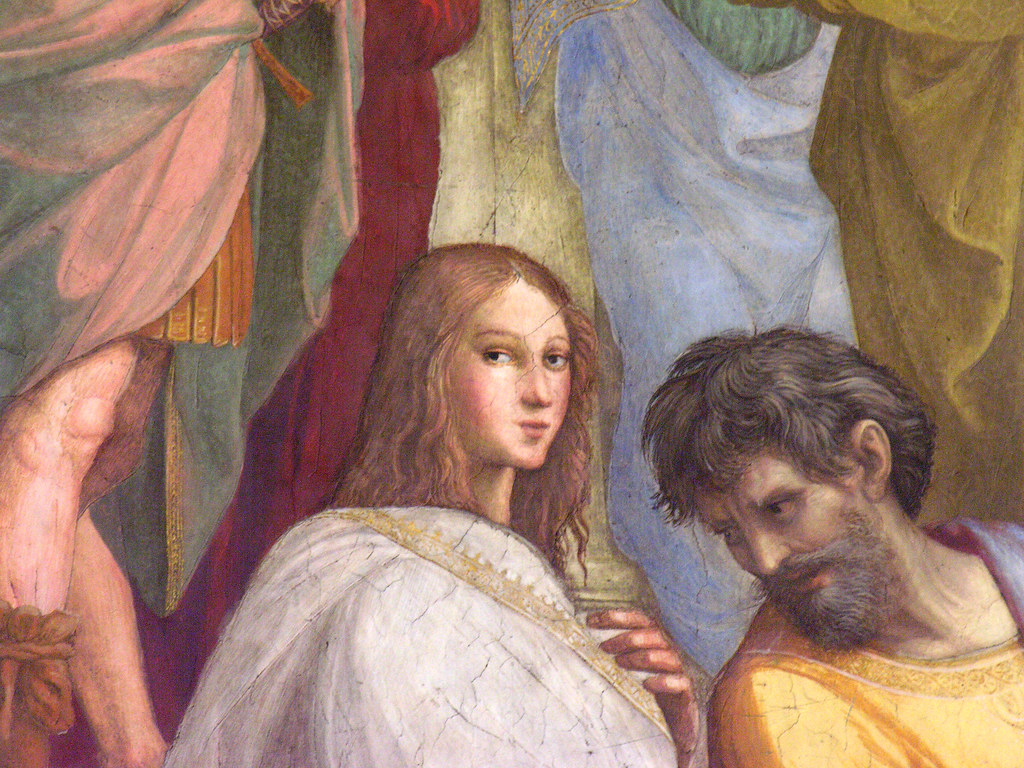By Katerina Valouxi,
While observing “The School of Athens”, one of the most famous Renaissance paintings by the renowned Italian artist Raphael, one’s eye will browse over countless men dressed in elegant tunics, until it falls on the single woman in the whole entire painting. Between Parmenides and Pythagoras stands Hypatia, dressed in a white robe, being the only person depicted to make eye contact with the audience.
However, her gaze does not seem to indicate anything else other than the fact that she wishes to be seen and acknowledged. Countless women have been erased from ancient history solely because of their gender, when in reality they could have contributed the same or even more than their male counterparts in their respective science. Despite these women definitely being more in number, this article will explore the lives of three of the most significant female minds of the ancient times that are associated with the ancient Greek world.
Hypatia was the first female mathematician whom there are records about. The exact date of her birth is not known for sure, but it is estimated that she was born around 370 A.D. in Alexandria. Her father was Theon, a mathematician, philosopher and astronomer, who was the director of the University of Alexandria. From the little information that we have regarding her early life, it is known that she received her education from her father while spending time with him in the University. Historians and philosophers of her time speak as highly of her physical beauty and grace as they do of her mind and intelligence. She was sought after by many suitors, including students of hers, but the question of her marriage still remains vague, with the most likely scenario being the one in which she stayed unmarried until her death.

Suidas praised her eloquence and her effective teaching methods, which included philosophy, math, astronomy and physics. In addition, Synesius claimed that her philosophy was carried to other lands, and students not only from Egypt, but also from other parts of Africa, Asia and Europe travelled all the way to Alexandria for her lectures. However, Hypatia’s death is the most “notorious” event of her life that has attracted the most attention. Cyril, who was elevated to the episcopate of Alexandria, began to enforce strict rules on the pagan religions that were practiced at the time and Hypatia herself was influenced by paganism and the school of thought of Neoplatonism. Tensions started arising between pagans and Christians, as well as between Cyril and Orestes, the Roman governor who was standing in the way of Cyril, preventing him from acquiring complete civil authority.
Because of Orestes and Hypatia’s close relationship, Hypatia was blamed by Christians for negatively influencing the Roman governor, and thus she had to be eliminated. What is known about her murder is the fact that she was kidnapped, dragged to the Caesareum Church, stripped off, murdered with shells, mutilated, and burned. Whether she was murdered because of political vengeance or because of her teachings regarding Neoplatonism, which included, for example, treating the mentally diseased using music, the death of Hypatia is yet another sign of history erasing women that stood out from their male counterparts.
Sappho was not just the most significant female poet of ancient Greece, but one of the most renowned ancient Greek poets in general. Born around 610 B.C. to an aristocratic family on the island of Lesvos, she was able to live more freely in comparison to, for example, an Athenian woman of the time, because of the liberties that her community allowed to the women of Lesvos. Later writers attribute to Plato the fact that he called her “the twelfth muse”, while in Plato’s dialogue “Phaedrus”, both Sappho and Anacreon are praised because of their ability to express love and desire in a striking way. Most details of her life have been lost, but it is said that she could play the lyre and would compose songs, and that she also ran a girl’s school in Lesvos, in which she taught eloquence to daughters of wealthy families in order to elevate their prospects for marrying well.

She later became so famous that there were statues raised in her honor and coins crafted with her face on them, some of them being used in Lesvos even until 900 years after her death. Little of her work is saved, and of the nine volumes she had written that were read we only have 650 lines. Her poems were most likely not saved because they were not copied and translated, due to Sappho writing in the Aeolic Greek dialect which was difficult to translate for Latin writers, but it is also said that works of hers were ordered to be burned by Pope Gregory VII and destroyed by the medieval church. Sappho’s poetry covered many topics but mainly revolved around romantic love and especially love between women, unapologetically expressing all facets of it.
Her works had become so popular that he meaning of the term “lesbian” changed from “the one who comes from Lesvos” to “a woman who prefers her own sex”. Poets and writers of her time, like Anacreon, used the term “lesbian” in the modern-day sense of the word and not geographically. Sappho was not only a master of lyricism and poetic expression, but she was also a master of technique; she invented the Sapphic Meter, which consisted of three lines of eleven beats and a concluding line of five.
Aspasia’s name has always been associated with that of the great Pericles, even though she was a remarkable woman herself. Aspasia of Miletus was born on the coast of Asia Minor and immigrated to Athens in 450 B.C. when she was an adolescent, because her older sister got married to Alcibiades, the grandfather of the notorious general Alcibiades. Thus, being a metic, a person who was not born in Athens, she had liberties that Athenian women could not have. She was also a famous hetaera, a high class courtesan, and it is said that she had created a girls’ school teaching philosophy and rhetoric as well as a salon, which was suggested to have been a brothel.

Moreover, being the partner and companion of Pericles, she would converse and communicate with many important men of the Athenian Golden Age, men who would visit her house and salon. In addition, significant thinkers of her time like Socrates, Plato and Plutarch praise her rhetoric and persuasion skills. According to the historian Will Durant, Socrates himself “marveled at her eloquence, and credited her with composing the famous funeral oration that Pericles delivered in honor of the casualties of the Peloponnesian War and, further, claimed that he, Socrates, had learned from Aspasia the art of eloquence“. Some scholars claim that Plato acknowledged her amazing skills, but he condemned her choice to use rhetoric in order to manipulate and conceive people. But then again, when have people not condemned women for being competent?
References
- Richeson, A. W. “Hypatia of Alexandria.” National Mathematics Magazine 15.2 (1940): 74-82.
- Sappho of Lesbos. World History Encyclopedia. Available here
- Pomeroy, Sarah B. “Prisoner of history: Aspasia of Miletus and her biographical tradition.” American Journal of Philology 117.4 (1996): 648-651.
- Aspasia of Miletus. World History Encyclopedia. Available here




